Discover The Secret Behind The Perfect Wacky Rig Set Up That You're Not Being Shown... Today!
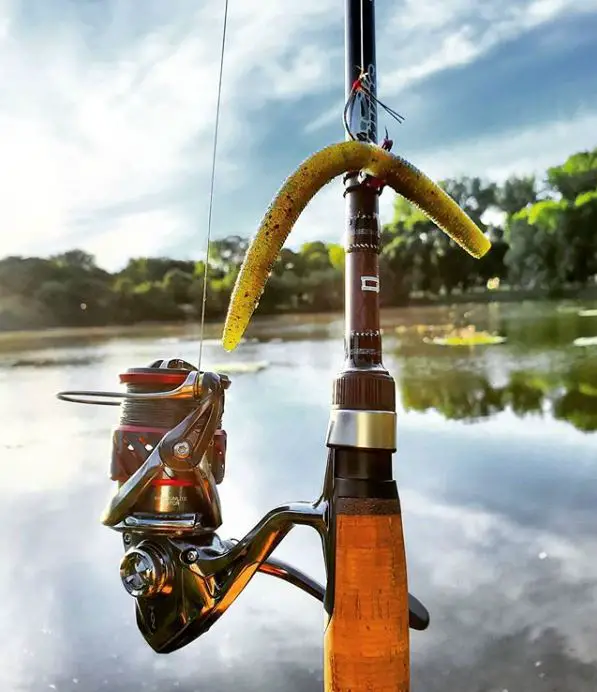
photo cred: @reelstories_fishing
The first part of this article covers the basic techniques to catch bass with a wacky rig Senko, focusing on the most popular rigging style.
Once you feel comfortable, scroll down to learn some of the pro-level tactics that no one is talking about for catching even more bass with a wacky reg Senko.
Key Takeaways
For most anglers learning how to use a spinnerbait can seem pretty exciting, yet somewhat intimidating. Here is a quick and easy to follow list to help you get started fast!
- Correctly set up the Senko wacky style using the transverse method.
- The best size Senko for fishing it wacky style is 4-6 inches… and… that size will also get the most bites.
- Allow the bait to fall that mimics a natural dying fish.
- Quickly test specific sinking speed to see if the bass wanted to eat a weightless wacky Senko or a faster falling weighted Senko.
- The best weather conditions to use a wacky rigged Senko is when it’s calm to slightly breezy, not windy.
- The best locations to fish this rig are the ones with structure.
- A clear to slightly stained water clarity tends to be the best for fishing a wacky rigged Senko, which lets you maximize the bait vibration and flash, without spooking the fish.
- The best wacky rig color combinations are based on the type of baitfish in your lake.
Putting to practice all these tips finally, make my day fun and exciting (with a lot less stress).
And that’s why I’m so passionate about fishing a Senko wacky rig and would like to share these same insights with you. Hopefully, it can make a difference in your life too!
WARNING: There’s a lot of information about this subject you’ll probably want to come back to. No one expects you to remember all these tips. We know your time is precious, so we really tried to over-deliver in value for you. Additionally, we frequently update reports like this, so you’ll want to stay up to date with any changes or additional tips we include for you.
We found that the easiest way to save and bookmark this report so you can come back to it later is to share it on your favorite social media platform, especially if you use your phone to get important tips like the ones in this report here…
Click on your favorite social media buttons to remember this page now!
How Do You Fish a Senko Wacky Style?
The wacky rig Senko is an ideal rig for thick cover and shallow water. It is simple to use; you throw it out, then twitch it twice and let it fall or sit there while you wait.
You need to pay attention to your line or the bass might eat the bait and swim away. You need to wait for the bass to take hold of the bait, then reel the slack in and move your rod in the direction of the bass.
Once you do, you can swing the tip of your rod and pull the line tight. This is the best way to hook the fish.
The bottom line is that you can’t go wrong using the Senko, as it is one of the easiest to use. Continue reading to learn how to fish wacky rig Senko.
Why Would a Fish Bite a Wacky Rig Senko?
The wacky rig Senko is one of the most popular ways to rig a rubber stick-style worm.
The hook is centered on the middle of the body of the worm, which means that it will sag the same amount on each side.
It looks kind of silly, but it works well when it is tough to get the bass to bite. When you use this rig, the Senko worm is the most popular one to use.
They come in different sizes, and they are stick baits. Bass can’t resist them because you basically cast it out and let it sink to the bottom.
Most of the time, you will get a bite as your worm is sinking.
The worm sinks slowly and will have a subtle “shimmy and quiver” movement. This is what makes them appear like an actual dying bait fish. And bass find this irresistible.
If the fish are not biting the day you go fishing, you need to throw a wacky Senko worm and you’ll start catching fish fast.
How To Set Up a Senko Wacky Rig
Setting up a wacky rigged Senko is easier than tying your shoe.
The bait is usually rigged weightless, although there are some circumstances when you would make it weighted.

Step 1
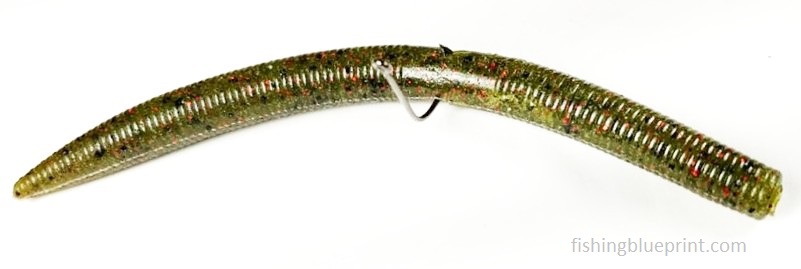
Step 2
The easiest and most basic way to wacky rig your Senko is to push the hook through the middle of the worm.
But there is risk in this. the hook will easily tear through the bait. Which means you’ll go through a lot more worms.
Using a wacky rig tool
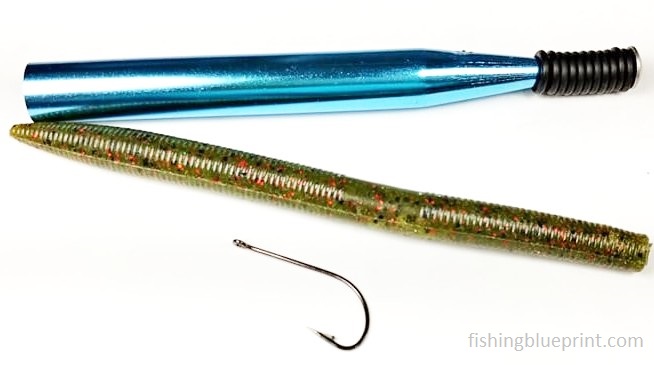
The preferred method is to use a wacky rig tool.
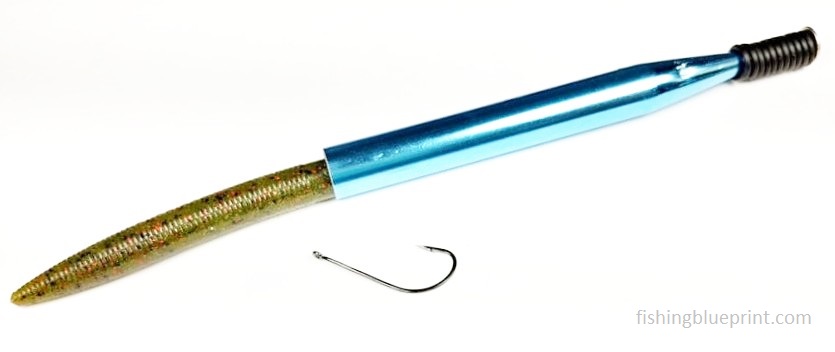
First, slide the worm halfway in the open end of the tool.
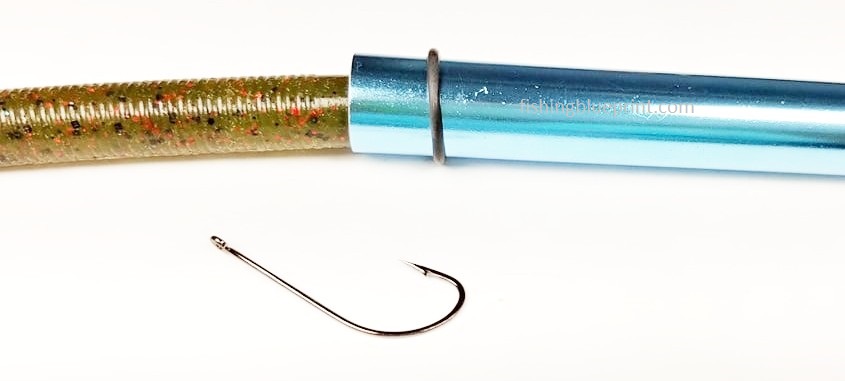
Slide the o ring up the tool…
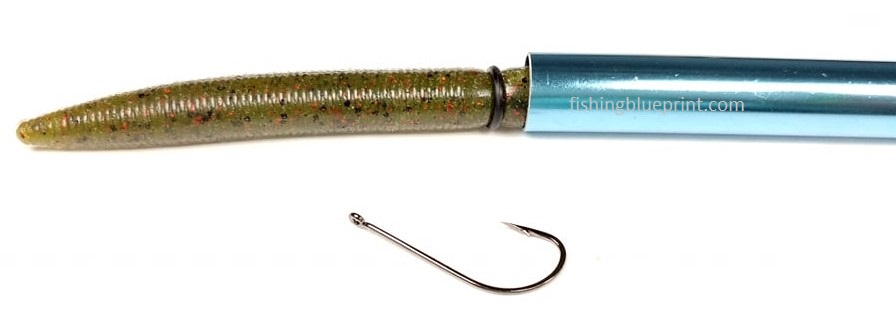
and onto the Senko.
Then slide a small rubber O-ring onto the Senko.
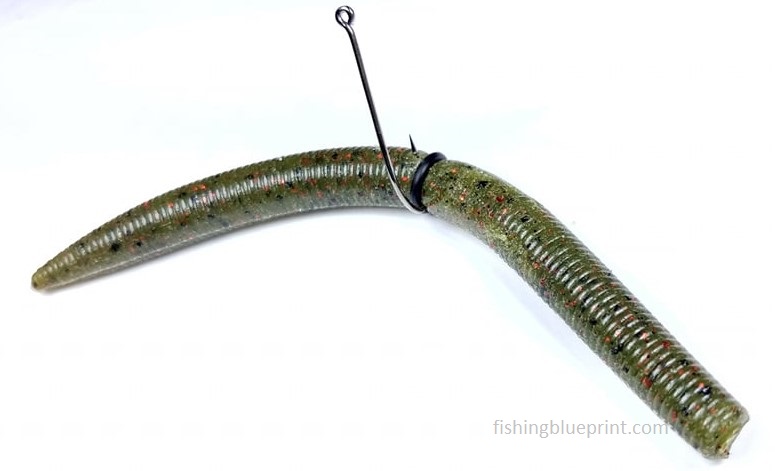
Finally, insert the hook through the O-ring transverse to the bait. It should look like a “+”.

This helps to reduce the number of worms that you will need to use.
Best Way To Cast A Wacky Rig Senko
The best Senko anglers know there are several different ways to present and retrieve using a Senko wacky rig.
Standard over the shoulder cast
If the target is more than 15-feet away and there is no overhead cover like trees or marina shades then a standard cast is ideal.
Sidearm (or roll cast)
A sidearm cast is created by rolling the tip of the rod from a horizontal position and allowing its momentum to cast your bait to the target.
This cast is recommended if you’re casting more than 15-feet away and there is overhanging cover present.
Flipping
If you’re trying to target a very specific spot, or if your target is less than 15-feet, or if you want to make a quiet entry into the water, then flipping your wacky rig Senko is the method you want to use.
Skipping
You know that big bass like hunker down deep in the darkest of cover (like boat docks) and love to ambush prey as they swim by.
However, no overhead cast or even a sidearm cast will get the Senko into the deepest parts of the structure.
Like skipping a rock, you need to skip your wacky rig Senko under the structure to get to the bass.
Skipping a Senko or any other soft plastic lure can be difficult to learn, but it isn’t impossible.
Luckily I wrote an entire article on how to skip your lure while avoiding spooking the bass with a bad cast.
>> Click HERE to learn more: Skipping Senkos The Easy Way
I also wrote an article on how you can practice skipping your wacky rig at home!
>> Click HERE to learn more: How to Practice Skipping Docks At Home (In 5 Easy Steps) <<
How to Fish A Wacky Rig Senko (Best Presentations and Retrieval Techniques
Highlighted below are several retrieval techniques, and all have their specific use.
As you’re reading think about where you like to fish the most and what techniques you could use.
Weightless wacky rig
The first is the weightless wacky rig.
For this presentation, you need to make sure that your rig has enough weight to cast the distance. If your Senko is too light, the wind may blow against it and make it harder to get out where it needs to be.
This is the easiest presentation, and the only equipment you need is an O-ring.
You need to pay attention and watch your line when the Senko is dropping because that is the time that the bass will bite.
Then, you can move your rod toward the fish, tighten the slack, and hook it.
Where this technique excels: Shallow water fishing, bed fishing during the spawn, fishing in shallow cover or brush (just use a weedless wacky hook).
When to avoid using this technique: Deep water fishing. It will take your bait too long to fall to deep water.
Skipping a Weightless Senko under docks and boat slips
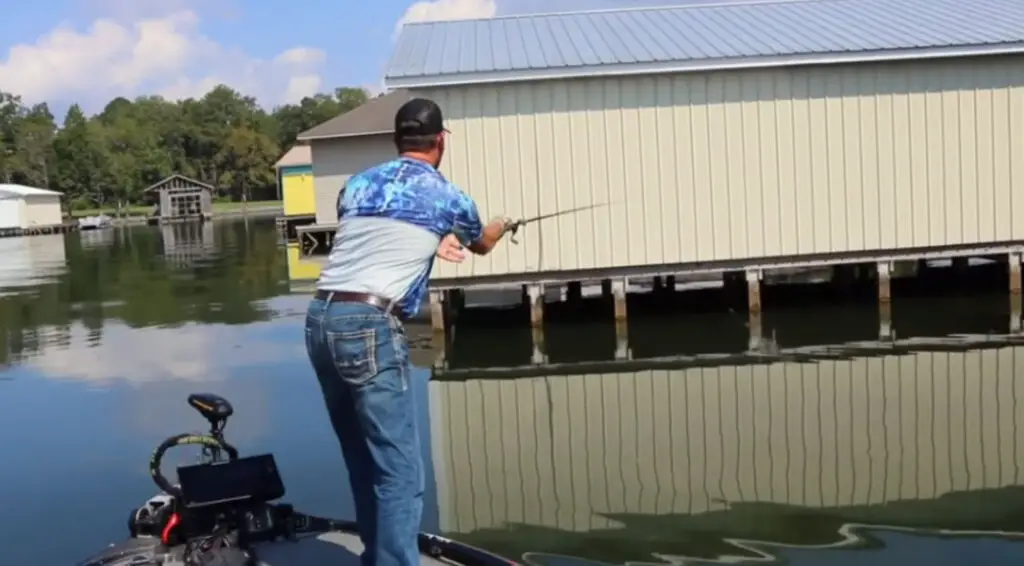
photo cred: CBS Sports
Targeting these specific areas are prime spots to hold big bass.
Where this technique excels: Anywhere there is close to the water overhanging structure. Structures like docks, boat slips, and under very low hanging trees.
When to avoid using this technique: open water fishing.
Drop shot wacky rig Senko
Another technique is the drop shot wacky rig Senko. This presentation is the best as the Senko is moving down to the bottom.
You set it up by rigging a standard drop shot with a swivel and a weight at the end. Then, you will place the hook through the meatiest part of the worm, which is usually about one-fourth of the way down.
Once you line it up, you are ready to fish.
Where this technique excels: Shallow or deep fishing (you’ll just need a heavier weight for deep fishing), fishing spawning beds, fishing dock pilings or vertical structure.
When to avoid using this technique: If the bass are eating topwater, or you are wanting to fish fast.
Weedless wacky rig Senko
Next, is the weedless wacky rig Senko.
You can rig it the same way you would a weightless wacky rig, however, you”ll just use a weedless wacky hook.
It provides extra protection to prevent hang up on brush and other structures.
Where this technique excels: Large amounts of brush, vertical timber, floating vegetation.
When to avoid using this technique: Open water with nothing to hang up on.
Some may also claim that using a weedless hook could possibly create a small chance of getting a poor hook set. Reason being is the weed guard could get in the way from properly setting the hook.
Topwater wacky Senko
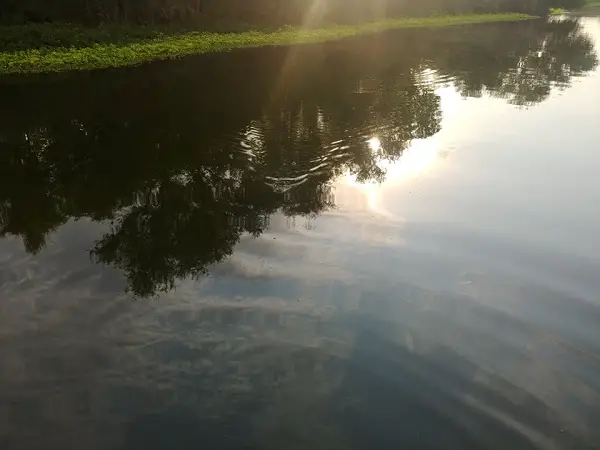
The ideal time to fish a wacky rig Senko for top water bass is during the hottest part of the summer, however topwater bites can and do occur anytime from late spring to early fall.
Another important consideration when using a wacky rig senko for topwater bass fishing is to double check and ensure that your hook is centered in the bait.
Otherwise the bait will not have the correct presentation.
Begin with a nice cast out to your desired location. (If you’re just getting started with this technique, practice in open water first).
Just before the bait hits the surface, engage your reel and start reeling your bait, just like if you were fishing a buzzbait.
If you forget or don’t have the chance to do that and your bait hits the water, raise your rod tip as high as you can and reel in the bait quickly.
Once the Senko is on the top of the water, start softly shaking your rod (quivering and popping motions) while continuing to reel in the Senko on the surface.
The trick is to reel quickly enough to maintain your bait on the surface, then shake your rod tip to send out the stoke vibration waves.
They’ll come up to eat your bait, so keep an eye on it!
If you use a good weedless hook you can use this method for targeting bass that are pinned deep in cover, bushes, or grass without having to worry about getting hung up.
It’s a unique presentation that most bass anglers haven’t used before.
Where this technique excels: Bass are eating topwater, fishing over shallow but submerged grass, “buzzing” it over bass beds.
When to avoid using this technique: when bass are not eating topwater and are relating to the bottom instead.
Neko Rig wacky Senko

A Neko rig is really just a wacky rigged Senko with a small weight is then inserted into one side of the bait.
There are a variety of baits and stick worms that work well with the wacky rig and even more so with the Neko rig.
The most popular lure on a Neko rig is a fat straight tail worm – hands down. But other lures may also be used.
The Neko rig worms will have a distinct movement from the time it hits the water to the time it reaches the bottom.
Many times a Neko rigged bait will glide to the target on an angle, instead of dropping straight down like a shaky head worm.
Want more? Check out this new secret blueprint article about Neko rig Fishing Tactics Only The Pros Know About.
I just released it and the response I’ve been getting back has been amazing. Anglers like you have been catching a TON of bass! You can get it FREE here: click HERE to learn more!
Where this technique excels: Shallow water fishing targeting structure or vertical timber. This technique also works great for suspended bass
When to avoid using this technique: topwater
Carolina rig
The Carolina rig is a plastic bait rig similar to the Texas rig, except instead of sliding down to the hook, the weight is set above it by tying on a swivel.
Beginner anglers will enjoy the Carolina rig.
This particular setup is intended to aid anglers in catching bass relating to the bottom.
When bait tied to a Carolina rig is submerged, it moves in a circular manner.
This movement attracts bass, who are more likely to eat the bait as a result.
The Carolina rig uses a large weight that helps the bait to reach deeper water. This has its advantages in the winter when the water is frigid, and in the summer when bass are really deep.
Where this technique excels: Fishing deep structure, night fishing, deep summer fishing, deep winter fishing
When to avoid using this technique: fishing shallow
How Are a Weighted Wacky Rig Senko and a Weightless Wacky Rig Senko Fished Differently?
When you use a weightless wacky rig Senko, the appeal is that you throw it out and let it sink naturally. You keep the line slack, but pay attention as the Senko sinks to the bottom.
Once the bass bites, you point the rod toward it and tighten the slack to hook the fish. If you use a center weighted wacky rig, it works similarly to a weightless one, but the Senko falls down faster, and it pulls the bait more.
This makes the bass pulse and flap around with more strength. You will use this type of rig in deeper water or when you are looking for deeper targets.
Best Locations and Structures to Fish a Wacky Rig Senko
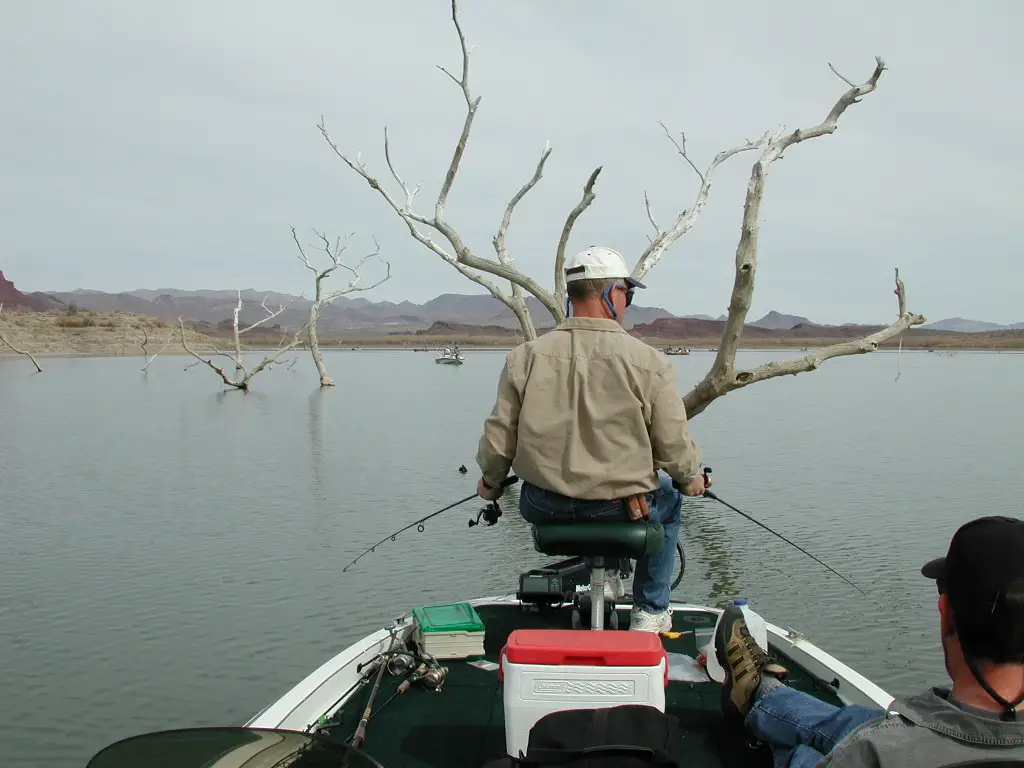
photo cred: AZGFD
The best location to use a weightless wacky rig Senko is in shallow water with thick cover. You won’t get hung up in the cover, and the Senko has a subtle entry down into the water.
It is ideal for getting the bass to bite. You can also use it around bridges and other structures.
- Shallow water brush
- Vertical timber
- Dock pilings
- Skipping under docks or overhanging structure
- Fishing over floating mats
- Fishing over submerged grass
- Fished over deep structure using a Carolina rig or heavy weighted drop shot rig
Best Size Senko (or Stick Bait) for Wacky Rig Fishing
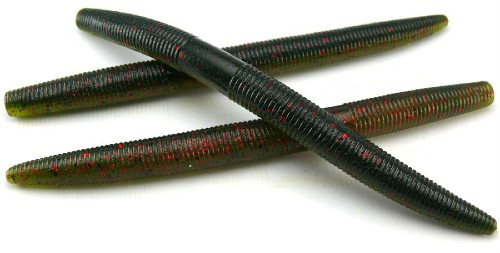
Senkos come in different sizes that are between four and seven inches long. You will want to use different sizes in different circumstances.
When you are wacky rig fishing, you will want to use a smaller Senko, such as a four- or five-inch worm. They are lighter and work well on spinning tackle.
The larger sized Senko worms are ideal for Texas rigging, especially when you are fishing in thick cover. They also stand out well in murky water.
Best Senko Colors for a Wacky Rig
Best All Around Senko Color
Naturally, your favorite Senko colors might be different from your neighbor’s favorites, but there is one color that seems to be everyone’s tackle box. And that is…..
Senko Green Pumpkin
#ad / Images from Amazon Product Advertising API
Best Senko Colors For Clear Water
In clear water, you need bait to look “natural” to the fish. Here are some of the best options for you to choose from. Watermelon Black; Baby Bass; Smoke Shad; Green Pumpkin
#ad / Images from Amazon Product Advertising API
Best Senko Colors For Stained Water
Best Senko Colors For Murky Water
#ad / Images from Amazon Product Advertising API
Best Senko Colors For Spring
#ad / Images from Amazon Product Advertising API
Best Senko Colors For Summer
Best Senko Colors For Fall
#ad / Images from Amazon Product Advertising API
Best Senko Colors For Winter
Best Senko Colors For Ponds
The Senko lures come in a large selection of colors, and for bass fishing, here are a few recommendations:
- Windy or cloudy days: white, chartreuse, or something with a silver or gold blade
- Low-light conditions: bright colors
- Cold water: black or black and blue
- Warm water: “living” colors, including brown, smoky gray, and green
- Water forage: shad and bait fish – Ayu, Wakasagi; crayfish baits – smoke gray or Green Pumpkin; bluegill – Green Pumpkin, purple, or chartreuse
These recommendations aside, if the color you’re using isn’t working, just switch colors.
In fact, most fishermen who use Senko lures have numerous colors on hand at any given time, since they know they’ll be using different colors for different scenarios.
Best Fishing Hooks (Type and Size) for a Senko
You can use a 1/0 Gamakatsu B10S Stinger hook for a 4” Senko. You hook it through the smooth area of the Senko that is about one-third of the way down on the worm.
This hook is a specialty hook, and it is actually made for tying flies. However, it has a unique design that makes it a great hook for a 4” weightless wacky rig Senko.
If you are using a 5” Senko wacky rigged, you can use a Gamakatsu G-Finesse Drop Shot Hook in size 1/0. This hook is lightweight, and it uses wire that has a small diameter.
If you’re fishing around brush, tree limbs, or dock cables then you must use the Gamakatsu 1/0 Weedless Wicked Wacky Hook.
It is still very strong, but it is small enough not to spook the fish.
For a 6” Senko, you can use a hook by Gamakatsu in size 1/0. This is a Wicked Wacky Hook that is a Kahle style, and it has a split plastic weed guard that helps prevent it from hanging up.
Best Fishing Line for a Wacky Rigged Senko Fishing
The best fishing line for a wacky rigged Senko should vary depending on your fishing conditions and water clarity.
If you’re likely fishing in thick cover, or if the water is stained, then a 12-17-pound test fluorocarbon line is strongly recommended.
The thicker the brush and dirtier the water, you'll want to upsize your line size.
Whereas, if you’re fishing in clear water conditions and are free of any structure (for example if you’re fishing bridge pilings or structure without any risk of getting hung up) you want to fish a lighter diameter line.
In this situation, the common consensus is to use an 8-pound fluorocarbon line.
Hey did you realize, if you really want to catch a TON of bass, these fishing line recommendations it’s only the tip of the iceberg…
Recently, I published a complete report about the secrets to choosing the best bass fishing line, where I lay it all out for you!
I caught a lot of flack for this because this a topic the pros and expensive guides DON’T want you to know about.
Check it out here click HERE to learn more!
Tackle Considerations
Senko rods are categorized as light jig and worm rods and are ideal for the job.
Anglers can use either a spinning rod or a casting rod.
Best Casting Rod For Senko
The best Senko casting rods are often shorter than standard casting rods, ranging in length from 6’6″ to 6’8″, with a medium to medium-heavy backbone and a fast to extra-quick tip.
These rods have the ideal combination of a “springy” parabolic bend that allows for precise casting accuracy with an ox-like backbone.
But that is just the tip of iceberg. There are many other factors that go into determining what a great casting rod for senko (or worm fishing) should look and feel like. Some of those factors include style, material, length, sensitivity, durability, cost, and warranty. Fortunately, you in luck because I made a complete report where I give you the best casting rod for senko fishing that will fit into any budget and more!
Best Spinning Rod For Senko
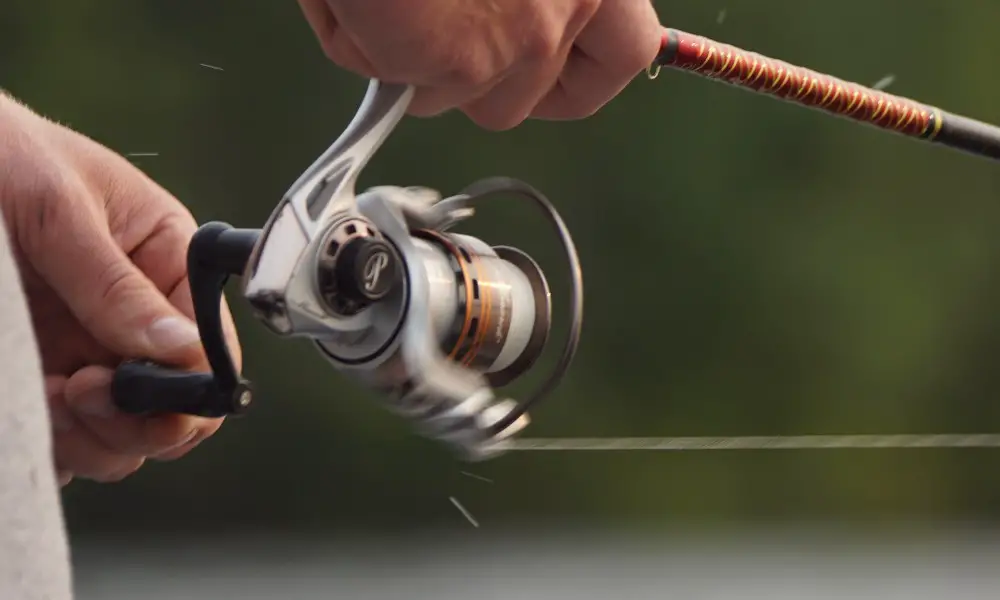
Regardless, if you don’t know what the best spinning rod for you is, call or stop into your tackle shop and talk to the owner.
You can also ask members of local bass angling groups will quickly answer your question. It’s not like you’re asking them to tell you what their favorite secret fishing spot is.
If you’re still having trouble finding the right spinning rod, read this post I wrote for you. It’s about, the Top 10 Spinning Rods For Senko Fishing – Some Of These Rods You Don’t Know About.
Other Senko Related Articles Listed Below!
- What Is A Senko Bait? [We Got Your Answer Here!]
- How To Fish A Senko Texas Rig (Easy Beginner’s Guide with Pictures)
- Discover The TRUTH About Fishing A Wacky Rig Senko (... Avoid Getting Hung Up!)
- Hands Down! These Are The Best Spinning Rods for Senko Fishing (Texas Rig, Wacky, Weightless and More...)
- Discover The Best Casting Rod For Senko Fishing [My Budget Selection Costs Next To Nothing!]
George Servinson
My name is George and I'm been fishing my entire life and love all things outdoors. My passion is helping anyone catch more fish. The newest things I've been doing lately is learning how to break down and clean all my reels, teaching my boy how to kayak fish, and bushcraft wilderness survival.





















